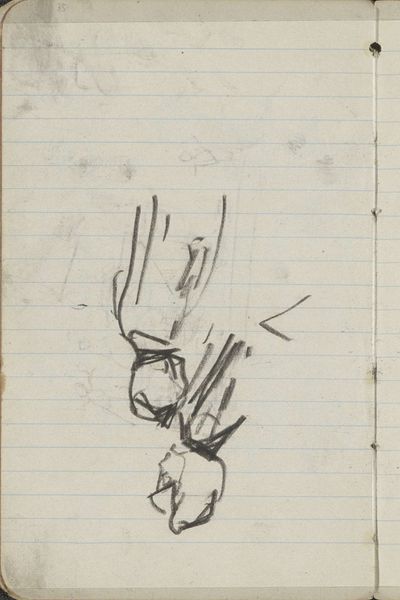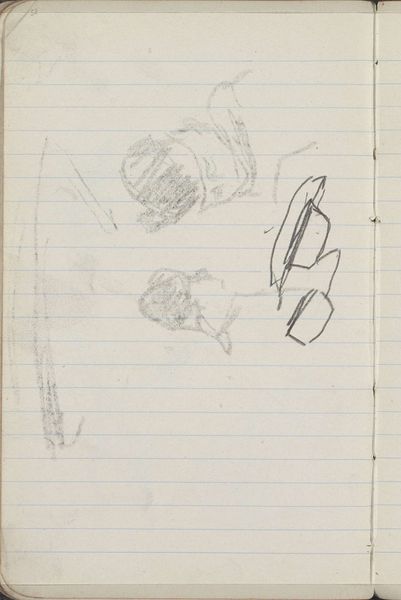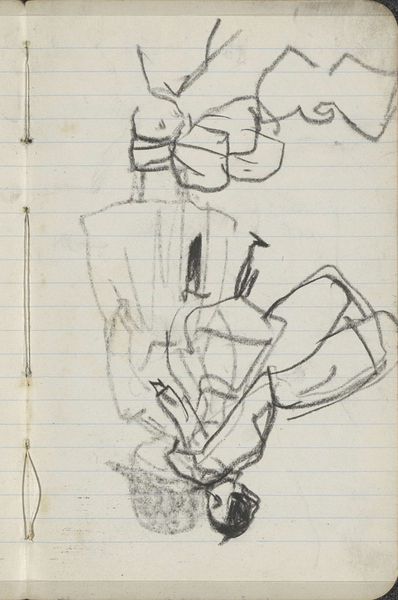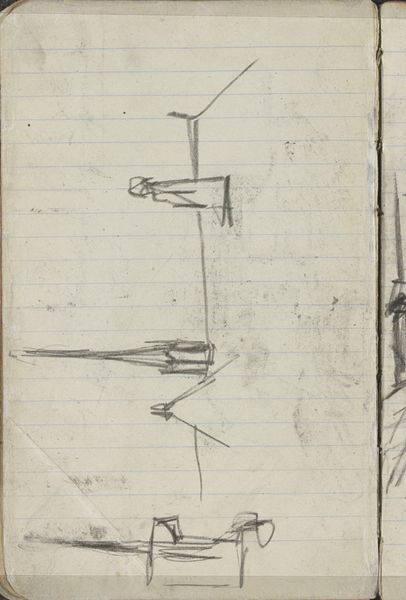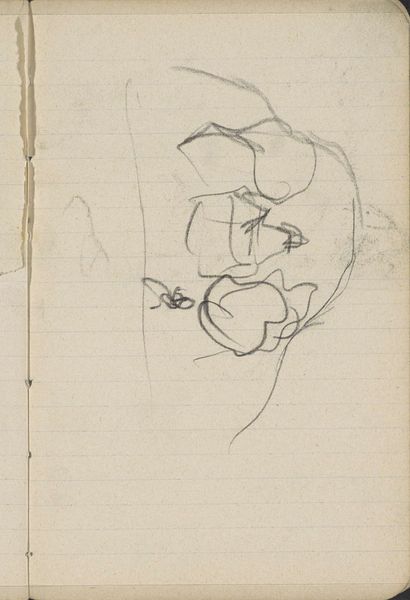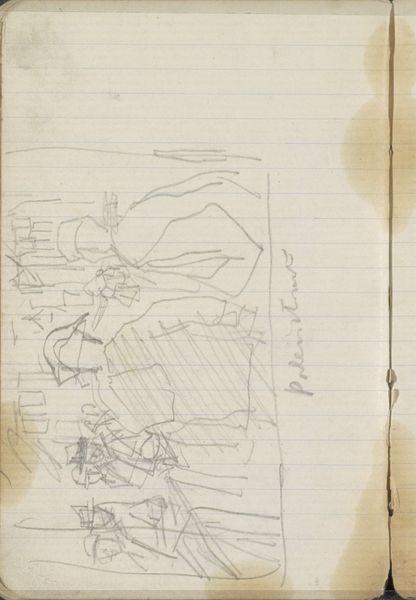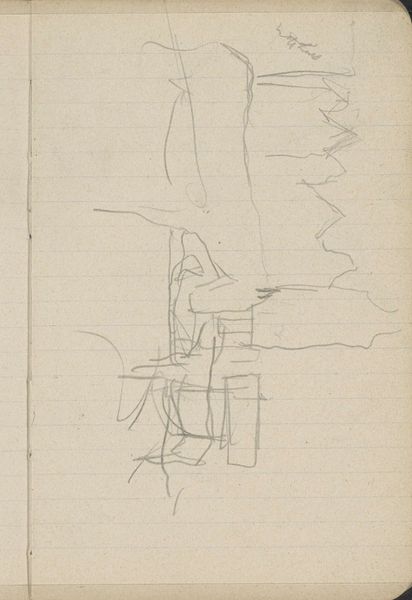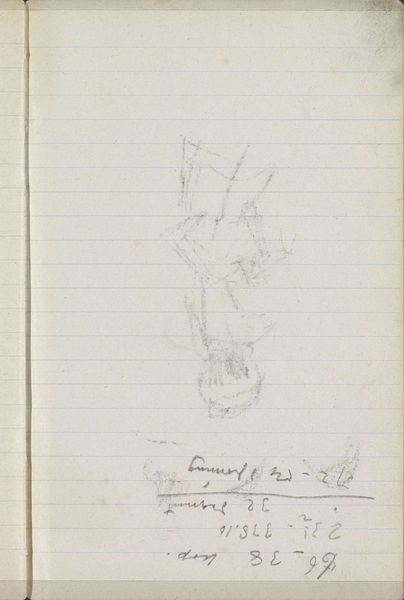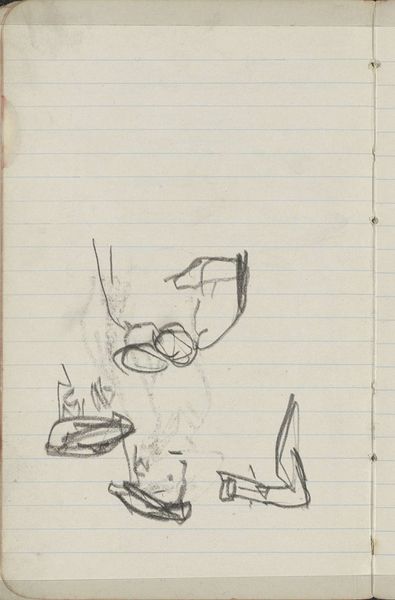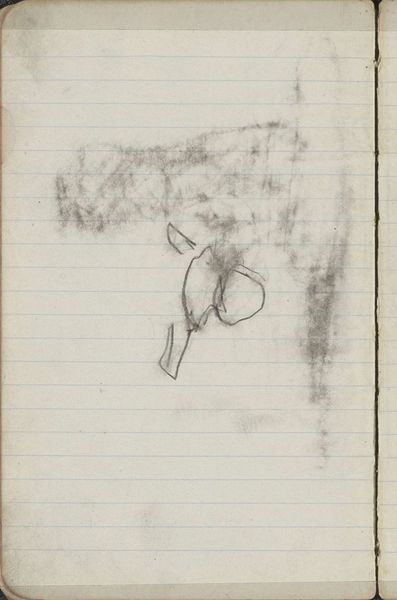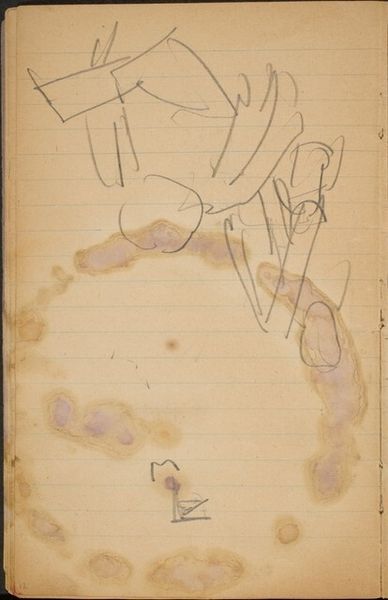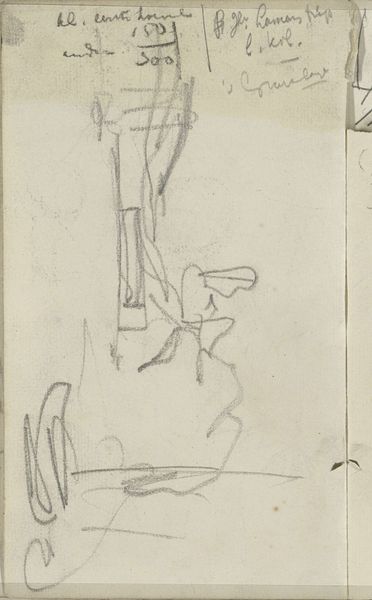
Copyright: Rijks Museum: Open Domain
Editor: Here we have George Hendrik Breitner's "Studieblad" from around 1894, a pencil drawing on paper. Looking at these rapid, almost frantic lines, I feel a sense of urgency, as if I'm glimpsing a fleeting moment captured on the go. What do you see in this work? Curator: This "Studieblad" offers a compelling glimpse into Breitner’s process. Rather than viewing this merely as a sketch, we can consider it a site of artistic resistance. Breitner, embedded in a rapidly changing Amsterdam, uses the sketch as a space for unrefined, immediate reactions to urban life, countering the formal constraints often imposed on representations of women in art. Notice the gestural figures. They aren’t idealized. How might this raw approach be understood as a rejection of bourgeois expectations surrounding femininity and representation? Editor: That’s fascinating! So, you’re saying the roughness isn’t a lack of skill, but a conscious choice? I was initially focused on the lack of detail, but I see now it reflects social commentary, rather than mere incompleteness. Curator: Precisely. It pushes us to consider whose stories are typically centered in art and whose are marginalized. What narratives emerge when we prioritize the fleeting impressions of everyday women? Editor: It gives agency to the artist and the subjects in the sketch. It allows us to see their shared experiences as part of everyday life. I never would have seen this on my own! Curator: That's the beauty of engaging with art, isn't it? Seeing how historical context and social dynamics intertwine in seemingly simple images opens up a whole new realm of interpretation. Editor: Absolutely. I'll definitely look at sketches differently now.
Comments
No comments
Be the first to comment and join the conversation on the ultimate creative platform.
